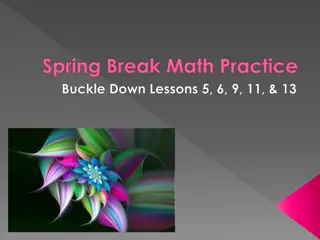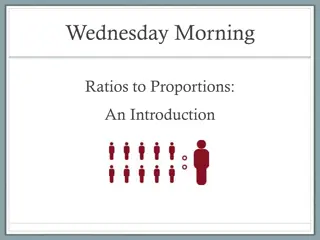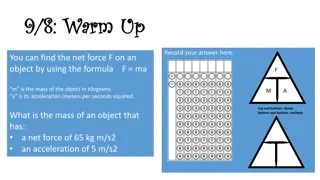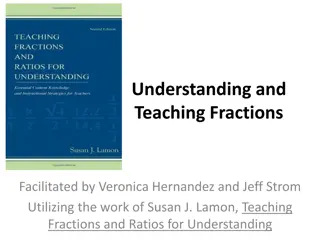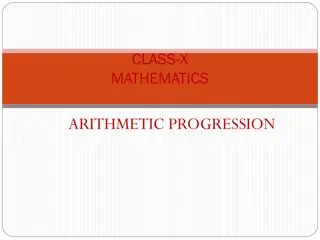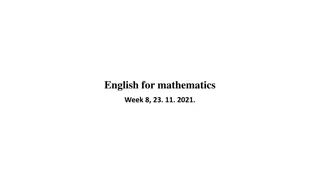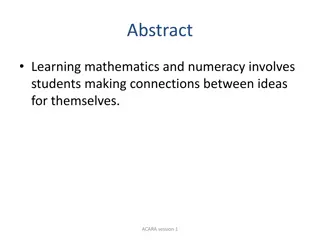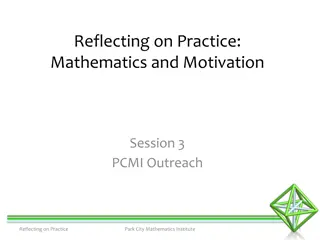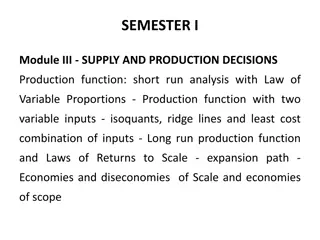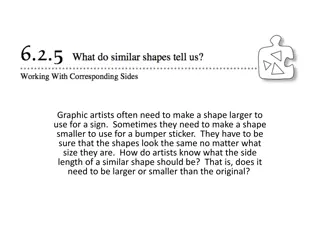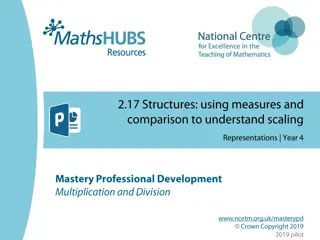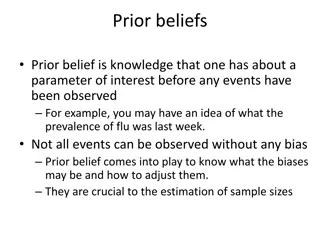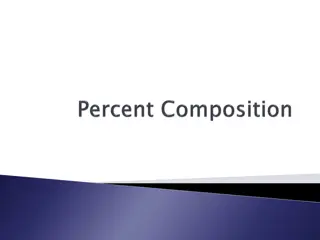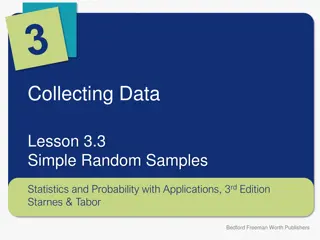Understanding Proportions in Mathematics
Explore the concept of proportions in mathematics as you learn to define proportions, determine their accuracy, find unknown values, and solve problems using proportions. Key vocabulary such as ratio, proportion, cross multiplication, equality, and fractions are covered in this lesson. Practice identifying true or false proportions and solving for unknown quantities in proportions through step-by-step examples and sample problems.
Download Presentation

Please find below an Image/Link to download the presentation.
The content on the website is provided AS IS for your information and personal use only. It may not be sold, licensed, or shared on other websites without obtaining consent from the author. Download presentation by click this link. If you encounter any issues during the download, it is possible that the publisher has removed the file from their server.
E N D
Presentation Transcript
Proportions Unit 1 Lesson 5 Math 6
Proportions Students will be able to: Define proportions. Determine whether a given proportion is true or false. Find the unknown value in a proportion. Solve problems using proportions.
Proportions Key Vocabulary: Ratio Proportion Cross Multiplication Equality Fractions
Proportions Proportions A proportion is the equality of two ratios (or fractions).
Proportions How do we write proportions? Proportions can be written as follows:
Proportions Is the proportion TRUE or FALSE? To determine whether given proportion is TRUE or FALSE, we use the process of cross multiplication . Example: Tell whether the given proportion 3:4 = 15:20 is true or false.
Proportions Example: Tell whether the given proportion 3:4 = 15:60 is true or false.
Proportions Step 2: Multiply the numerator of the first ratio by the denominator of the other ratio, and the numerator of the second ratio by the denominator of the first ratio.
Proportions Step 3: If the product are equal, then the proportion is TRUE. If not then the proportion is false.
Proportions Sample Problem 1: Tell whether the given proportions are TRUE or FALSE,
Proportions Finding the Unknown in a Proportion If it is known that the given ratios are proportional, then you can easily find the unknown quantity in a proportion. Example: Solve for xin the proportion x:4 = 15:20.
Proportions Example: Solve for xin the proportion x:4 = 15:20. Step 1: Write the given proportion in fraction form.
Proportions Sample Problem 2: Find the unknown in the proportion 15:a = 25:5.
Proportions Solving Problems Using Proportions A lot of real life problems can be solved using the concept of proportions.
Proportions Example: A photographer wants to enlarge a photograph with width 6 inches and length 9 inches. He wants to make the length of the new photograph 12 inches, but still want to keep the proportion of the width to length. What is the width of the enlarged photograph?
Proportions Solution: Step 1: Determine the relationship of the ratio in the given problem. width : length
Proportions Step 2: Write a ratio that compares the quantities given in the problem. Original photo - 6 inches : 9 inches Enlarged photo x : 12 inches
Proportions Step 3: Write a proportion that reflects the equality of the ratios infraction form. ? ?= ? ??
Proportions Step 4: Solve forx. 9x = 72 x = 8 Therefore the enlarged photo has a width of 8 inches and 12 inches length.
Proportions Sample Problem 3: Chris can type 5 pages in an hour. How long will it take him to complete 100 pages?




